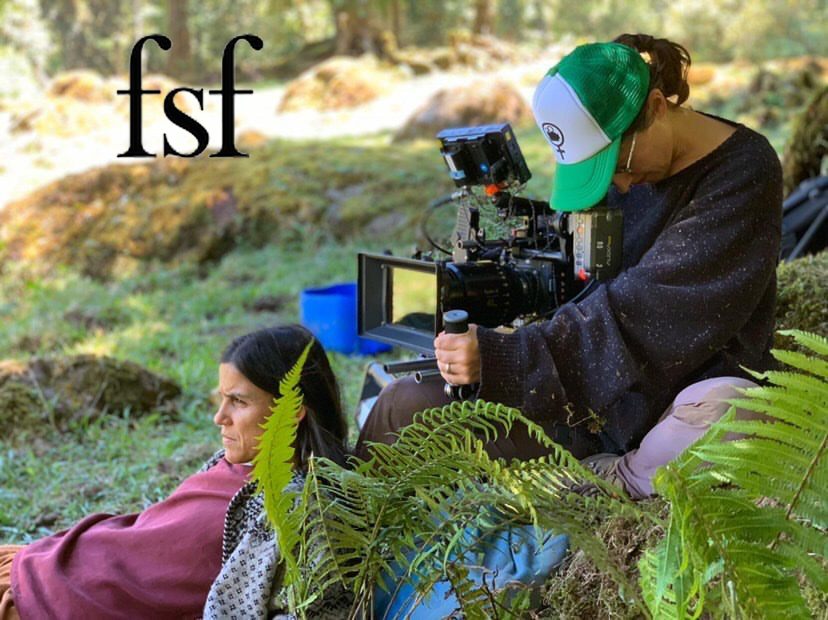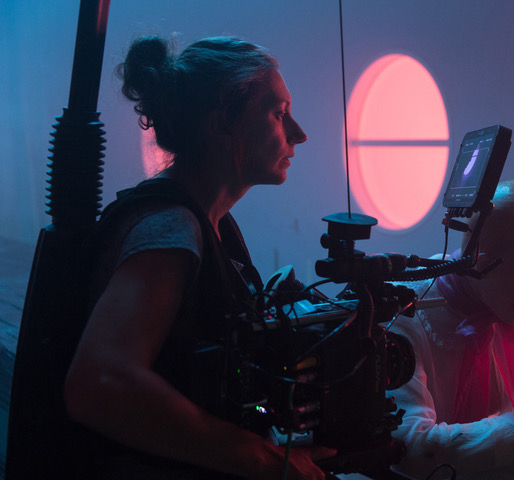Kodak Vision 2 HD film
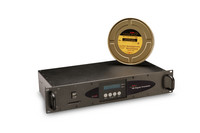
Kodaks film Vision 2 HD har nu funnits på marknaden ett tag och ett flertal stora TV-serier i USA produceras nu på denna specialfilm som är gjord endast för skanning tillsammans med speciell hårdvara.
På IBC i Amsterdam i september kommer Kodak att visa ett flertal nyheter, bl.a. Vision 2 / 50D, 5201/7201, som fått en lägre kontrast än sin föregångare, för att bättre klara hög ljuskontrast vid solsken. Kodak Telecine Calibration System är en ny hårdvara som förenklar och förbättrar skanningen.
KODAK VISION2 HD System
Highlighted at IBC Conference
AMSTERDAM, September 8, 2006 – Cinematographers are discovering the creative flexibility offered by a specially-designed film that is an integral part of the KODAK VISION2 HD System. Cinematographers who are currently using KODAK VISION2 HD Color Scan Film 7299/5299 on American television productions include Gordon Lonsdale on Bones, Rohn Schmidt on The Shield, Krishna Rao on The Unit, Ron Garcia, ASC and Bing Sokolsky, ASC on Numb3rs, and Lowell Peterson, ASC and Richard Rawlings Jr., ASC on Desperate Housewives.
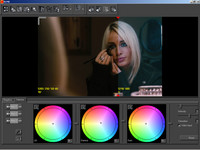
The KODAK VISION2 HD System has been nominated and short-listed for the new IBC Innovation Awards. The awards were introduced this year as a way of recognizing innovative use of technology in the creation, management and delivery of content. More than 70 entries were received. An international panel of industry journalists along with IBC Chairman Michael Lumley will judge the nominations which made it to the short list of finalists. Winners will be announced during the IBC 2006 awards ceremony on September 10.
“The KODAK VISION2 HD System allows cinematographers to work with one film offering an extremely wide latitude range,” says James Minno, television segment manager for Kodak’s Entertainment Imaging Division. “The system combines the strengths of film origination with the flexibility of hybrid postproduction technology. We thank IBC for acknowledging this breakthrough in the convergence of art and technology.”
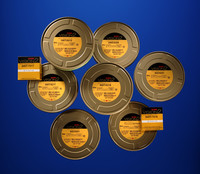
The KODAK VISION2 HD System includes a scan-only film in Super 16 and 35 mm formats, software, and a digital processor that can be used by colorists at postproduction facilities to follow the instructions of cinematographers who want to emulate the imaging characteristics of past and any current Kodak color negative emulsion.
The 7299/5299 emulsion features an extended dynamic range coupled with a broad range of exposure latitude. Cinematographers can choose an exposure index (E.I.) of 100, 320 or 500 depending on the situation. This enables them to work in virtually any lighting environment, ranging from low-key, interior scenes and night shots to bright, high-contrast exteriors.
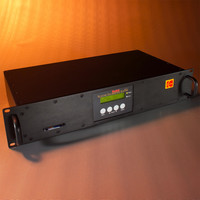
The KODAK VISION2 HD Digital Processor Version 2.0 and software enables colorists to follow the instructions of cinematographers who want to compensate for different EI ratings, under- and over-exposures and variations in color temperatures. In addition to mimicking the imaging characteristics of different color and black-and-white negatives, it can be used it emulate various photochemical processes including bleach bypass and cross-processing, as well as desaturating colors.
Minno notes that the system also allows facilities to switch more quickly and efficiently between different telecines, monitors and suites. It offers enhanced storage capabilities and includes user controls, information displays and ways to import 3-D LUTs (look up tables).
Garcia used the system to create a unique “look” for Numb3rs during the first nine episodes of the series.
“Today’s films provide an amazing range of latitude,” says Garcia. “Even if part of a frame is four or five stops overexposed, we can still see details the way our eyes do even in the brightest part of the frame. There is a broad choice of emulsions with different imaging characteristics, including how tones and colors are rendered on the negative. This film gives us the utmost flexibility in every circumstance.”
The KODAK VISION2 HD System can also be integrated with the KODAK Look Manager System (KLMS). KLMS is used to previsualize, create, communicate and manage film looks from preproduction through postproduction. The cinematographer uses digital still images or scanned film frames as a visual reference for the colorist at the postproduction facility.
For more information on the KODAK VISION2 HD System.
For more information about the 2006 IBC Innovation Awards.
_
Kodak Showcasing Motion Imaging Technologies
At IBC Conference
AMSTERDAM, September 8, 2006 – Kodak is highlighting an array of advances in film and hybrid postproduction technologies here at the annual International Broadcasters Conference (IBC) through September 12. The company is showcasing the KODAK VISION2 HD System, which is designed to enhance both creative flexibility and efficiency in television production. Other demonstrations will feature the latest software versions of the KODAK Look Manager and KODAK Display Manager Systems. By combining these hybrid technologies with stunning film-originated images, Kodak will exhibit the highest quality imagery achievable through today’s motion picture chain.
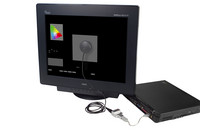
“The convergence of advances in film and hybrid technologies is giving the filmmaking community the creative flexibility it desires along with greater control over the visuals throughout the entire postproduction process,” says Kim Snyder, general manager of Worldwide Origination Products for Kodak’s Entertainment Imaging Division. “Whether our customers’ projects are destined for television or cinema screens, Kodak offers the superior resolution and dynamic range of today’s best origination medium”film” with the control and creative options offered by digital postproduction technology for displaying high definition content.”
The Kodak exhibit features an array of film images recorded on KODAK VISION2 16 and 35 mm films that will be projected at the stand. Some images were recorded on the most recent addition to the KODAK VISION2 family of films. KODAK VISION2 50D 5201/7201 color negative film is optimized to capture high-contrast images in either bright, natural sunlight or artificial 5500 degrees Kelvin daylight. The new emulsion also performs reliably in light with mixed color temperatures and is available in all popular formats.
“We are listening to cinematographers and responding to their wishes by continuing to invest in our film portfolio,” Snyder says. “There are now seven negative films in the KODAK VISION2 family. Each of them offers specialized imaging characteristics.”
The KODAK VISION2 HD System was introduced last year. It is designed to enable cinematographers to use one emulsion that can be manipulated in postproduction to emulate the tone and color imaging characteristics of other existing and some discontinued color negative films. The system includes a specially designed film that features an extended dynamic range and latitude along with a digital processor used by the postproduction facility. The film can be rated at exposure indexes (E.I.) of 100, 320 or 500, and is available in 16 and 35 mm formats.
Enhancements to the system’s hardware platform incorporated earlier this year include improvements that make the system more versatile and efficient, easier to switch between telecine suites at a facility, along with emulating additional film looks such as black and white and various photo-chemical processes.
The same hardware platform can also be used to support the latest version of the KODAK Telecine Calibration System (TCS). The TCS is designed to ensure that subtle details in highlights, shadows, contrast and colors are retained when the negative is scanned and converted to digital video format during postproduction.
“Offering one box that has the flexibility to perform multiple functions simplifies processes for facilities and operators,” Snyder adds.
The KODAK Display Manager System (KDMS) V4.1 and the Kodak Look Manager System (KLMS) V2.1 are also being demonstrated at the booth. KDMS enables postproduction facilities to more efficiently emulate film looks on electronic display devices using an automatic calibration function. The latest version of KDMS allows users to import print film 3-D LUTS into cinema-grade digital projectors, which enables accurate viewing and grading. The KDMS includes proprietary software and an easy-to-use monitor calibration sensor. The system incorporates Kodak color science technology, and it can be used for CRT, LCD, standard- and high-definition monitors to emulate the look of images recorded out to Kodak print films.
KODAK Display Manager Lite is another cost-effective option offering a subset of the system’s features. KDM Lite is intended for use with CRT and LCD display devices that require monitor calibration, but do not need the full set of features on the various workstations being used simultaneously on a project.
“The goal is to ensure that collaborators working on motion picture film projects are consistently seeing identical images regardless of locale or equipment,” says Snyder. “The product options were developed in response to suggestions made by filmmakers and postproduction facilities.”
KLMS is designed to allow cinematographers to pre-visualize and manage film looks from preproduction through postproduction. The software-based system locks the picture data into an exportable file, which can be accessed by other system users to ensure accurate communications in a collaborative environment. Precise calibration ensures that the cinematographer, editor, director and various collaborators working on a project are seeing the same nuances in images displayed on viewing devices.
KDM and KLMS are compatible tools, which can also be integrated with the KODAK VISION2 HD System.
The exhibit also showcases the new Aaton XTRprod2 and ARRI 416 cameras. These innovative 16 mm cameras offer advanced functionality coupled with a lightweight design. They include a range of creative options for filmmakers utilizing advances made in film technology. Additionally, Teranex has licensed proprietary film enhancement algorithms from Kodak. They will be integrated into the Teranex portfolio of high performance video processing solutions beginning in 2007. Minno notes that Teranex has a wide base of customers in the production and broadcast markets who will benefit from the ability to efficiently enhance film images, including 16 mm and archival footage, for high-quality broadcast display in standard- and high-definition television formats.
“We are committed to the future of film and dedicated to research and development into technologies that broaden the options available to the creative community,” says Thierry Perronnet, marketing director for the Kodak Entertainment Imaging division in Europe, the Middle East and Africa. “The possibilities are as far-reaching as the imagination.”
The Kodak Entertainment Imaging Division is the world-class leader in providing film, digital and hybrid motion imaging products, services, and technology for the television, feature film, commercial, music video and documentary industries.
For more information, visit www.kodak.com/go/motion.
